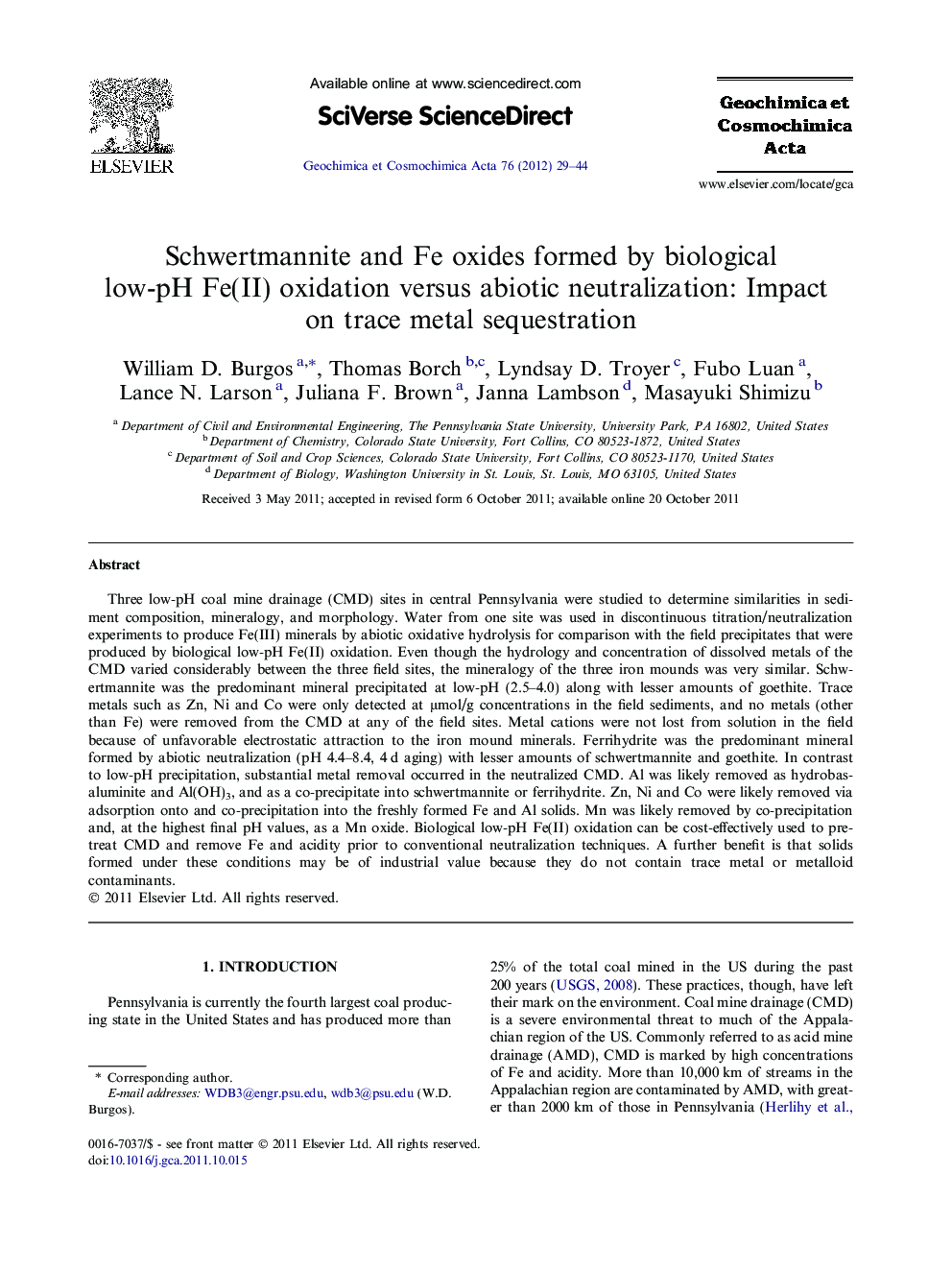| کد مقاله | کد نشریه | سال انتشار | مقاله انگلیسی | نسخه تمام متن |
|---|---|---|---|---|
| 4702981 | 1638081 | 2012 | 16 صفحه PDF | دانلود رایگان |

Three low-pH coal mine drainage (CMD) sites in central Pennsylvania were studied to determine similarities in sediment composition, mineralogy, and morphology. Water from one site was used in discontinuous titration/neutralization experiments to produce Fe(III) minerals by abiotic oxidative hydrolysis for comparison with the field precipitates that were produced by biological low-pH Fe(II) oxidation. Even though the hydrology and concentration of dissolved metals of the CMD varied considerably between the three field sites, the mineralogy of the three iron mounds was very similar. Schwertmannite was the predominant mineral precipitated at low-pH (2.5–4.0) along with lesser amounts of goethite. Trace metals such as Zn, Ni and Co were only detected at μmol/g concentrations in the field sediments, and no metals (other than Fe) were removed from the CMD at any of the field sites. Metal cations were not lost from solution in the field because of unfavorable electrostatic attraction to the iron mound minerals. Ferrihydrite was the predominant mineral formed by abiotic neutralization (pH 4.4–8.4, 4 d aging) with lesser amounts of schwertmannite and goethite. In contrast to low-pH precipitation, substantial metal removal occurred in the neutralized CMD. Al was likely removed as hydrobasaluminite and Al(OH)3, and as a co-precipitate into schwertmannite or ferrihydrite. Zn, Ni and Co were likely removed via adsorption onto and co-precipitation into the freshly formed Fe and Al solids. Mn was likely removed by co-precipitation and, at the highest final pH values, as a Mn oxide. Biological low-pH Fe(II) oxidation can be cost-effectively used to pre-treat CMD and remove Fe and acidity prior to conventional neutralization techniques. A further benefit is that solids formed under these conditions may be of industrial value because they do not contain trace metal or metalloid contaminants.
Journal: Geochimica et Cosmochimica Acta - Volume 76, 1 January 2012, Pages 29–44